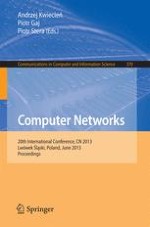This book constitutes the refereed proceedings of the 20th International Conference on Computer Networks, CN 2013, held in Lwowek Slaski, Poland, in June 2013. The 58 revised full papers presented were carefully reviewed and selected for inclusion in the book. The papers in these proceedings cover the following topics: computer networks, network architectural issues, Internet and wireless solutions, teleinformatics and communications, new technologies, queueing theory and queueing networks, innovative applications, networking in e-business, security aspects of hardware and software, industrial systems, quantum and bio-informatics, cloud networking and services.
